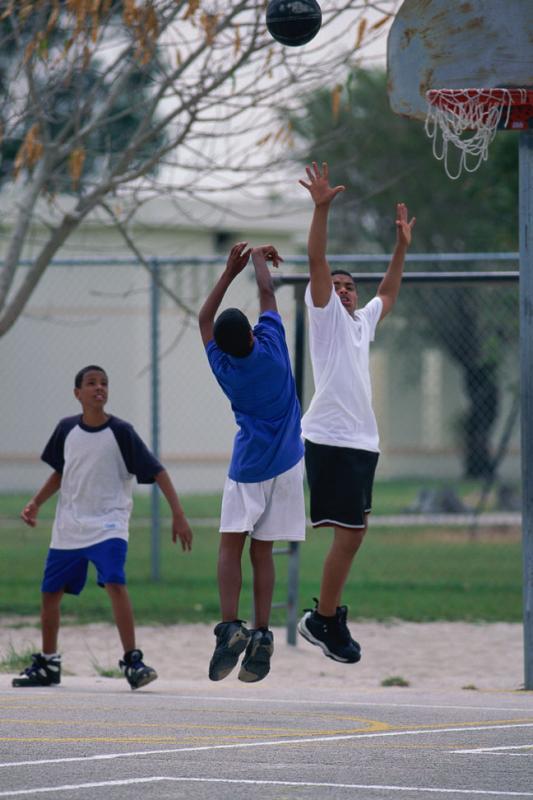I have been running around the country and the world for the last 20 years trying to advocate for a change in basketball format which is better for teaching the game to younger children, especially at the elementary school ages.
I took a long look at youth soccer many years ago, and I realized a lot of youth soccer was played and learned with small-sided games, rather than 11 v 11, which is most common among older kids. The United States Youth Soccer Association recommends short-sided games for younger ages, such as 3 v 3 for under 6, 5 v 5 for under 8, and 7 v 7 for under 10 - much less than traditional 11 on 11.
Small-sided games in basketball, of course, have also been going on for over 100 years, ever since basketball was developed, whenever there weren't enough players to field five-a-side teams. Go to the courts at your neighborhood playground, and short-sided games is often what you will see. Nothing wrong with it. It's still an opportunity to learn and have fun! 
3 on 3
With the consultation of many people in the soccer world, and a other experts in youth basketball, I came to the conclusion years ago that, for our youngest kids, there's a better way for them not only to play the game, but to learn the game. What I decided tom advocate was essentially small-sided basketball, which in our game is known as 3 on 3.
Again, anyone who's grown up playing basketball at some time played 3 on 3 and on a half court and for a simple reason, there were only 6 kids and one basket. If you didn't have the ability to play full court and you had 6 kids and one basket, what did you do? You go play!
There are all sorts of variations, of course, even playing 2 on 2 or 1 on 1. With the help of some very good soccer people, I have come up with a specific model of 3 on 3 that I think can be easily implemented for young kids. So, as I have talked about in other articles, I've spent a lot of my time not only trying to lower the rims and eliminate full court presses at youth levels, but I have also worked to convince the heads of basketball programs whose natural tendency is to want to play the "real" 5 on 5 game, to spend more time teaching the game 3 on 3 with a half court.
Benefits
This leads to a number of benefits for the kids. If you've got six kids to one ball rather than ten kids to one ball, you have much less congestion of the area around the basket and, very simply, you get what the soccer people found out decades ago: more touches. Kids get to touch and play with the ball more. I don't know of any high school, college, or pro coach who disagrees with me (and believe me, as a former college and pro player, I know plenty of them).
On any team of where 5 kids are playing, the most skilled player - who is 20% of the team on the floor - may get up to 40% of the ball-handling opportunities, while the least skilled player may get 10% or less. With 3 on 3, the ratio for the least skilled player rises significantly, especially because 3 kids on a side still need to all play with each other in order to create both width and depth in passing the ball around.








